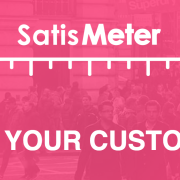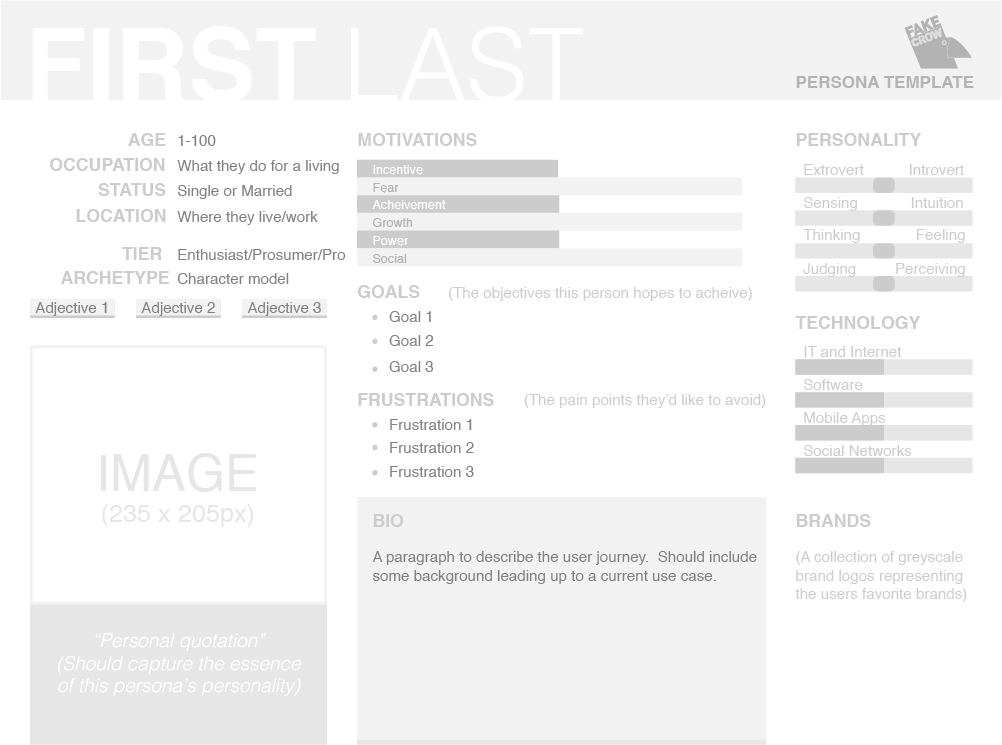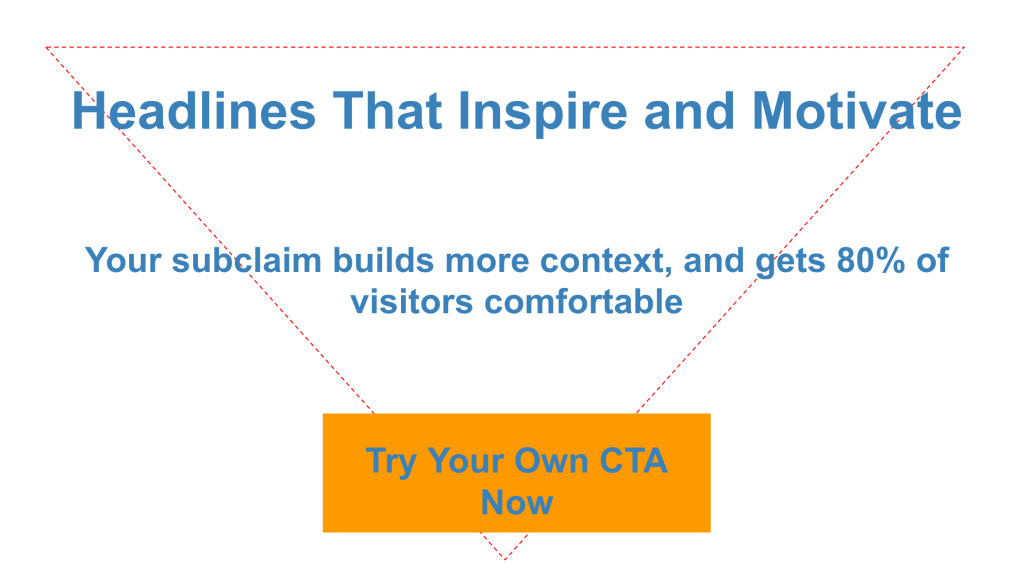Yes, We Still Need Accelerators
/in Life at an Accelerator, Starting a Business, Startup Tools/by StartupYarda few weeks ago, I was in attendance at Pioneers, in Vienna. It’s a great conference, and there were quite a few really interesting startups on display, including several of our own, like Claimair, TeskaLabs, and Satismeter. What’s more, it’s the right kind of conference for startups. Why is that? Well, as we’ve talked about in the past, there are a multiplying array of “startup industry” events out there, many of which deliver little benefit to actual startups.
Pioneers though, is pitched at investors for its exclusivity. Startups not only have to be selected for the Pioneers top 70, but they also attend for free. Investors, rightly, pay for the event, and for the opportunity to talk with so many promising founders.
There are a lot of VCs at Pioneers, and that’s a good thing. But there were few accelerators, and I think that’s a shame. Here, I’m going to talk about why I think so, and why we still need accelerators.
VCs and Backwards Goals
Part of going to Pioneers, for startups, is identifying fundraising goals. These are included in the company descriptions, and used to match startups with investors at the event. Fine so far.
Most startups, knowing that the event is aimed at tech VCs, say they’re looking for anything from 1 to 5 Million Euros. The average seemed to be about 1.5 Million. While it’s generally true that VCs want to invest in specific ranges, at specific stages, the truth is that most of the startups who are asking for those amounts don’t actually need the money right now. But in order to appeal to as many as they can, startups try to optimize their “ask,” before talking with the investors.
Instead of assessing their near-term business goals and funding needs, and narrowing their focus on a specific type of investor, they’ll craft a pitch for investors that portrays them as emerging companies that are “months away,” from a breakthrough advance that will turn the industry on its head.
The customers are just waiting to buy. The specific market need is a foregone conclusion. So really, in their imagining, it’s just a matter of the VC believing in the long-term prospects of the company and its industry, and assuming that the money is going to help them ride out their short-term challenges.
It’s a case of “get the money now, and figure out how to grow after that.”
It Doesn’t Work That Way

In order to paint rosy pictures about the future, founders tend to make startlingly bold predictions about their ability to do things that literally no one else has ever done in business. A new technology is new; and proving the market need for it is really at the heart of what an early stage startup should focus on. When I hear from a startup that their new technology is going to “change the way that X does Y” (eg: doctors diagnose cancer, or manufacturers bill distributors, or parents teach children), the first question I ask is “does X really want to change the way they do Y?”
Maybe they do. But then again, maybe they don’t. Maybe they do, but they want to do it in a completely different way. Maybe, maybe, maybe. Startups assume that investment is going to paper over those questions.
Ironically, VCs seem to operate according to the exact opposite assumption: a company that needs their money is not a company they want to invest in. Ideally, they would only invest in companies that have already proven they can make partnerships and sell, and the capital they receive will go mainly to doing more of what they already do well.
In effect, venture capital is an accelerant, not a fuel source. Startups treat it as a first step, when really it’s somewhere near the end of the process.
Why It Happens
Why then the disconnect? I think there are two problems:
1- Founders have been convinced that the “funding gap,” between early stage investors, -like business angels- and VCs is an artifact of the business; a bug rather than a feature. They become persuaded that they need to conform to what VCs expect, because VCs are too rigid, and need to have items checked off their list in order to invest. If they just tick the boxes, they’ll get the investment.
It doesn’t help that in some overheated markets, that’s really true. Some startups do seem to raise investment by ticking the appropriate boxes at just the right time.
But in reality, the funding gap is there mostly because it’s a bad idea for most investors to get involved with a company that doesn’t have product market fit, but wants to commit significant time and resources to developing new technology.
Simply, too much money at the wrong stage can be a bad thing. It can encourage a startup to build up technical debt without solving key issues of market fit. The funding gap can keep that from happening, by making it harder for startups to raise money at the wrong time, or for unsound reasons.2- VCs are not always motivated to tell founders about these concerns. They stay positive and encouraging, in case the startup suddenly proves it can really grow.
I can’t say how many times I’ve talked to a really impressive startup team, with really impressive technology, who are having problems raising money, and don’t know why they can’t. Investors seem impressed with them and their tech, and yet they don’t pull the trigger on investment.
“Everybody really likes it, and we’ve had really positive feedback. Some VCs are very interested in what we’re doing.” Of course they are, because why wouldn’t they be? But eyeing someone in a bar, and marrying them are two different things: startups can easily fall into the belief that “interest” equals “appetite.”
The Rule Book is No Good
Knowledge about the “startup industry,” and about investors has grown among startup founders. They’re now able to suss out and learn about the way VCs work, and the way they make decisions.
I was recently handed, at another conference I will not name directly, a literal book called the Startup Playbook. This kind of thinking predominates among people who neither invest in startups, nor run their own.
My belief is that this leads some founders to the mistaken conclusion that because they understand how VCs work, they can therefore get investment from VCs. However, the fact that a startup understands a cap table and has a clear idea of the kinds of things a VC invests in does not mean that they can get that VC to invest in them.
And this is where accelerators still play a vital role. There are plenty of stars in the tech industry who are simply unaware that they are stars. Because they play by the “rule book,” that everyone is increasingly aware of, they may forget that the rules don’t have to apply to them. And accelerators are, at the core, about breaking the rules.
We Still Need Accelerators
If you compare accelerators with other investors, we should look like odd ducks. We shouldn’t behave according to typical patterns. Because our appetite for risk should be unusually high, our tolerance for uncertainty should also be commensurately wide. Open questions, to us, should be good things, and sure things, less interesting.
That approach can really help startups to focus on doing what they do best, which is solving problems no one else knows how to solve. Where a lack of certainty may be a negative to a VC, it is ideal for us as a starting point. Uncertainty is something you can work with, and something you need in order to be truly unique. You have to question everything, and be questioned on everything.
Founders usually seem to expect an accelerator to behave the way a VC would: to be encouraging but vague. But more often than not, startups in the situation I’ve described end up expressing a sense of relief after a meeting: “I’m so glad we talked about this. I never get feedback that’s so direct.”
This is part of why VCs look more and more to accelerators to be the first movers in new market categories, new technologies, and new business concepts. More and more, our own contacts in the VC world turn to us not only for opportunities to invest in startups, but also to steer startups in our direction, hoping that the accelerator will be a proving ground for the team, the business, and the technology itself.
Attending an accelerator is not for every startup, but it is increasingly becoming a badge of confidence that VCs are looking for. And every year, we see VCs paying closer attention to our program, and others like it, to gain insights and opportunities they can’t get anywhere else.
Salutara: Your Health Matters
/in Interviews, Life at an Accelerator, Starting a Business, Startups/by StartupYardSalutara is a full-service online platform for medical travel.
Every year, 11 Million people seek medical procedures that are not accessible or affordable in their home countries. With Salutara as a trusted advisor and intermediary, patients can search and compare clinics, arrange procedures, plan, book, and pay for a whole trip in one place.
I sat down recently with the founders, Martin Cvetler and Petr Vankat, to talk about Salutara’s current status, and future plans. Here’s what they had to say:
Q: Hi Petr and Martin! Tell us a bit about Salutara. Where did the idea for a medical travel platform come from?
Petr: I was spending my 2014 New Years in Switzerland with my girlfriend at that time who is a dental hygienist. As we were walking through the center of Thun, I saw a walk-in store saying “Zahn reisen – Dental travel” on the sign above the door. It caught my attention so I came closer and found out they were sending citizens of Thun to Hungary for dental procedures.
They organised trips specifically designed for patients with any kind of dental problem. This whole concept was taking place offline and was aiming at a very limited clientele. I thought why not do this online and globally? There is clearly a demand, with 20 million people traveling every year for treatment. That is when the idea was born.
But I put it in a drawer after my return to Prague and we started seriously discussing it in the summer of 2015 and in August we signed up for the Startupyard FastLane. And you know the story from there. We went through all the steps in the selection process and eventually made it to the accelerator.
Martin: Our first idea was to concentrate on dentistry and our first work name was “Bite´n´Chew” [laugh] Then we started to research, expanded the idea to other treatments and we just could not find a website that would be easy to use for booking a medical treatment abroad. Salutara is for people seeking quality medical care who cannot find affordable and accessible treatment at home. It’s a complicated and time consuming decision-making process, and we want people to have a way to do it all within one platform. We want to become the world’s most innovative medical travel booking platform.

The Salutara Team: Martin Cvetler and Petr Vankat
Q: What are some of the main advantages of traveling abroad for medical treatments? What kinds of treatments are most popular for medical travel?
Petr: One of the most obvious advantages is the price difference between countries and continents.
Just to give you an idea, it is very common that patients for example from the USA are saving up to 80% of their medical costs when traveling for a hip replacement, dental restoration or cancer treatment abroad. Those can add up to huge sums- into the tens of thousands of dollars per treatment. A hip replacement in the US can cost upwards of $80,000, while the same treatment by an equally skilled surgeon in India might cost $10,000. That easily justifies the cost of going abroad.
You know, the number one cause of personal bankruptcy in the United States, believe it or not, is medical bills. That really makes no sense to me in the modern world. But where there is such a clear need, there must to be clear, easy to access alternatives.
But the US isn’t the only place with problems. Waiting times in various countries such as the UK or Poland are also a big issue, as they can go as high as months and in some specific cases including orthopedy or eye surgeries up to years.
On top of that, some countries are facing certain legislative barriers that can be seen in relation to procedures such as In Vitro Fertilisation. At Salutara, we strongly believe that every human being should have a right to access that type of treatment, and we are working hard to provide options and accessibility for all the cases mentioned above.
Martin: We want to inform and educate customers about all possibilities that the medical travel industry offers. One example is the EU Directive 2011/24 that enables all EU citizens have their insurance cover procedures anywhere within EU. Not many people know this, and not many people use it. On the other hand we want to give our clients the opportunity to choose and decide if they want to go abroad or not. They can compare both options, decide and book abroad or at home. We just want to give them the freedom to choose and a tool to make it safe and easy.
Q: What are some of your key challenges in approaching consumers? How will you convince people that medical travel is for them?
Petr: We understand from our own experience that it can be tough to even decide where to go on holiday! Is the food going to be good there? Will it be safe to walk on the streets after dark? Will I be able to charge my iPhone there and get wi-fi? Generally speaking people are not always very open to changes and exploration. Especially when it comes to something so important and precious as human health.
Certain things are easy to sell. Medical travel can be vastly cheaper, and certain treatments will only be available abroad, depending on where a patient is coming from. But it’s about more than that. A person thinking about medical travel is concerned about trust and safety, and building trust is one of our biggest challenges going ahead. People deserve their dignity in medical care, and sadly that’s not something they can always have. So we want to change the way medical care works for those who can’t now get what they deserve.
That is why we are focusing on providing top notch care for our first customers – the early adopters or ambassadors. Sharing and promoting their experience on the website as well as on our social media profiles is going to be crucial- getting the word out through people like that will open up new possibilities for people who haven’t even considered medical travel. Good word of mouth plays an important role in the process of convincing others that it is safe and supremely beneficial to make the decision to pack up a small bag and take off for a treatment abroad.
Q: Let’s talk a bit about Salutara. What features and capabilities will you launch with? Where do you see the product in a year or two?
Martin: Customers will be able to connect directly with clinics and their doctors for unlimited online consultations and price quotes. They will be able to book a treatment and pay the deposit.
Later on we want to provide the whole travel package, including flight and hotel booking. Everything in one place. A lot of patients use medical travel for sightseeing before the treatment or they stay longer after the surgery to recover and come back home all fit.
Most competitors in this market right now are focusing on connecting clinics and patients. That’s great, but we want to provide a whole experience- start to finish. That is what we’re working towards: a platform that you can use exclusively to get reputable, safe, and fairly priced treatment anywhere in the world.
There are plenty of resources now available for medical travel and for patients seeking treatments. There are great services like RealSelf, which provides a community for people to discuss issues around cosmetic surgeries. We want to provide the same value to people- a place where they can find trusted opinions and advice, and also connect with the right doctors and clinics to provide the right treatments.
Q: What will be your focus within the next year? How will you approach the market, and which segments will you focus on in order to grow?
Martin: We will launch small and lean. Just with a couple of procedures, clinics in the Czech Republic and UK market on the patient side. After we optimize our workflow and processes, we will scale up with more treatments and clinics in the same markets and then expand within the EU in the second half of 2016 and globally in 2017. We’re starting with less invasive procedures like cosmetic dentistry, hair transplantation, sleep disorder, cosmetic surgeries, LASIK (laser eye surgeries). Then IVF and life threatening diseases and their treatment like oncology.
Our dream, as Petr said, is to be a trusted platform for patients and clinics the world over- so that people will always know what treatments and doctors may be available to them anywhere in the world. Right now, medical travel is very opaque- it’s run through backchannels, and patients rarely have any sense of who they are dealing with. That’s just not good enough. Fair, open, and trustworthy markets need transparency, and that’s what we will provide.
Q: Obviously partnerships are going to be a key factor in Salutara’s growth and success. Which partners do you view as strategically important, and how do you plan to build these partnerships?
Petr:There are lots of ways to think about partnerships in our case. We believe that the first partners should be charities of all sorts. It is important to give back. And those who are in need or unfortunately suffer from a specific condition deserve our primary attention.
We would like to donate a part of each transaction to a charity of choice for each patient who uses our services. Next in line of common sense, are travel agents both in countries where our patients travel from and in the countries of our clinics. Sport clubs and associations have a natural connection to what we are doing too, especially those where injuries happen often such as rugby or ice hockey.
We encourage anyone reading this to reach out to us with partnership suggestions from their network. We want to hear from you!
Q: You started at StartupYard with essentially nothing but an idea and a vision, and now you’re almost ready to launch. Have you been surprised by your own speed and execution?
Petr: I am personally naturally very impatient and yesterday was already too late. So until we fulfill our goal of becoming the world’s biggest platform connecting patients with clinics all over the world, and handling medical travel on every continent, I will not be satisfied with the pace of our progress. Nevertheless just being around such amazing influencers as Cedric Maloux or yourself, Lloyd, and having the priceless opportunity to consult with our great mentors helped us speed up the process a great deal. We can never thank them enough.
Martin: I will be very open here. I was a little naive a few months ago. The deeper we are in this industry the more I realize how much more is ahead of us and also what we could have done differently, faster and better. We have decided to make some compromises on the product and market entry in order to launch fast and we have a long list of updates already. The truth is we chose a very complicated product and market. And you just cannot do everything at one moment. You have to prioritize every day, stay focused but be able to pivot at the same time. All of this is very challenging but I enjoy it quite a bit.
Q: How has working with StartupYard affected the development of Salutara? Have any particular mentors had a big impact on your development?
Petr: As I mentioned above StartupYard is like a nitro boost in the Fast and Furious franchise. Being friends with one of the 2015 SY startups (TeskaLabs), we knew what we were going into and busted our bottoms to make it to the 2016 cohort, because we were aware of the impact SY had on TeskaLabs. To be specific at StartupYard you learn a great deal of skills from pitching, creating awesome landing pages to creating meaty content and to confidently ask investors for money. I am sure we will start to fully appreciate the help of StartupYard only after a couple of years from now looking back at the days spent here.
As far as mentors, the initial avalanche of heterogenous opinions and suggestions naturally creates a bit of perplexity when you want to take the advice and put it into practise right when the consultation is over. The mentoring month helped Salutara shape it’s business strategy and recognize some of the threats and weaknesses as well as strengths and opportunities.
Now as the dust is slowly settling, we are revising our notes and realizing the value of suggestions and tips we in some cases did not see immediately. To mention a few names in particular – Liva Judic helped us in the process of renaming our company, to Salutara. I cannot leave out Ladana Edwards whose persistence in support has been endless. Marketa Kabatova and her great input on Google advertising, Jeanne Trojan and her factual to the point tips on self presenting, Veronika Prikrylova, Klara Gajduskova, Karin Pomaizlova…Those are just a few, and all the mentors had something to contribute to our launch and growth, and we are super grateful for the chance to get to know them and learn from them. Thank you all, guys, you have been phenomenal! Hope we will show our appreciation by becoming the global leader in healthcare provision without having doctors on payroll.
Martin: Honestly I cannot imagine how we could move forward so fast without the support of the whole SY team, shareholders and mentors. It would be very long and painful without this.
Q: You’re currently expanding your team. Who are the kinds of people you are looking for?
Martin: Yes, we are now hiring a native English journalist/blog writer, social networks specialist, SEO specialist. Then two more coders, designer, key account for clinics and customer service specialists. We want a team of people that have drive and are results oriented. I want to also thank here Jiří, Jakub and Michal for their work, we are happy to work together.
Q: Where can potential partners, clinics, or job seekers get in touch with Salutara?
Petr: Salutara can be reached on our Twitter plus Facebook profiles and of course e-mails (petr@salutara.com or martin@salutara.com).
NeuronAd: Ads for Everyone
/in Interviews, Life at an Accelerator, Starting a Business, Startups, StartupYard News/by StartupYardDo you use AdBlock, or another ad-blocking solution? More and more, the answer to that question is yes. With the advent of adblocking for mobile, over 20% of online users now employ some form of ad blocker, and that proportion is growing rapidly.
Ads can be annoying, they often use too much data, and they can be loaded with unwanted code and invasive tracking. NeuronAd is working to reconcile the needs of online publishers, with the wishes of ordinary web users who are sick of invasive advertising on desktop and mobile. NeuronAd is a member of StartupYard 2016, and will present at our Demo Day, on April 6th.
I caught up with Karel Javurek, founder and CEO of NeuronAd, to talk to him about the state of online advertising, and his role in improving it. Here’s what he had to say:
Hi Karel, Tell us a little about yourself and NeurodAD. How did you come up with the idea?
My experience has lot to do with NeuronAD, because I’m a journalist and writer, owner of a small content website, and an entrepreneur. But i’m also a reader and i saw Adblock becoming stronger and stronger every year.
Some publishers do get a bit extreme with the number of ads on their sites, but Adblock is the opposite extreme – completely no ads. So I started thinking about that, and I realized that basically the current model of online advertising is broken.
People want content, and advertisers want impressions. But publishers have to balance these two needs, and they have a very hard time doing so. The economics of advertising are constantly pushing them to new extremes.
At some point, online ads stopped helping online publishers, and started to hurt them, and that starts to happen when the pain the ads are creating is real enough that people do something about it- like using AdBlock. And that happens essentially because the reader does not feel that their interests are aligned with the publisher. Instead, they see publishers as working for advertisers, even though they are relying on the publisher for content that they want to view.
There has to be some middle ground– a solution that can balance both sides.
Readers are ultimately the most important part of online advertising. That’s what advertisers are there for, and it’s why publishers exist. At the same time, advertising is ultimately meant to be beneficial to people. In a fundamental sense, advertising does help us to make choices about how we spend our money – and it can have a positive role in our lives.
You want to know if a product is right for you, or if something new is available, and advertising helps us learn things like that. But neither advertising nor publishing is going to work if the publisher can’t survive because half of the readers are blocking ads, and the other half are being attacked with them.
What we see today is the whole system sort of breaking down, and that’s bad for everyone. NeuronAd is set up for what I think the future of online ads is going to be– something much more sensitive to the needs and wishes of consumers.
Tell us a bit about your team as well. Who is working with you now? Are you looking for more people?
Right now we are about 8 people. As CEO I still do everything except programming, that is managed by the David Dutkovsky, our CTO. We are still mostly programmers and DevOps, but also one experienced sales pro from the US, who has worked more than 10 years in online advertising business, and led big teams of salespeople.

The NeuronAd Team, Karel in the middle.
Our business is strictly B2B, so we will need lot of sales help in order to expand. We are always looking for talented programmers as well. We are solving hard and unsolved problems, so it’s very interesting even from the architectural point of view.
NeuronAD defeats ad blockers. What’s the problem with ad blockers, considering that they are so popular?
The main problem with ad blockers is that they are too extreme – they block every ad on every page a user visit and usually, once a user installs them, they never uninstall them. Possibly over 20% of internet users now use some form of ad blocker, whether or not such technology is really needed to enjoy online content. In most cases, they simply aren’t necessary.
Making quality content isn’t free, and i think everyone who use adblock, knows this. Ads are a great solution for a free internet, and they work not only for publishing, but also for Google, Facebook and a lot of other online companies and startups.
Some publishers are greedy, honestly, and they deploy too many ads, pop-ups and so on. But that in itself is an extreme situation, for which all publishers are being punished. We are trying to help conscientious publishers who display useful, relevant ads that are not obtrusive- as it should be.
Ads that are tasteful and well placed can add value to a reader’s experience. That is the kind of thing we want to support with our technology.
Can you talk a bit about how NeuronAD’s technology works? How does it get around Ad blockers?
Our solution gets around any type of blocking software in a browser- desktop or mobile – and can also get past adblocking on the network level, where it’s normally hard to do. So we can offer publishers a future-proof solution for the next generations of adblocker, not just the ones on the market today.
We do that by detecting when an adblocker is being used, and rebuilding that page with code the adblocker doesn’t recognize, delivering an “ad-lite” experience that an ad-sensitive user should find acceptable.
It’s a better alternative than, for example, barring ad-blocked users from visiting the site at all, as more and more publishers, such as Forbes, now do.
We’re building NeuronAd from the ground up, to tackle ad blocking technology where it will be two, three, or even five years from now.
We can also easily update our solution, so if there is any problem with any type of new adblocker, we will be able to patch our technology quickly, and publishers don’t need to take any action.
Will NeuronAd have any effect on website visitors who are not using ad blockers?
No. NeuronAd only affects users who are employing ad blocking technology. For typical visitors, NeuronAd has no effect on their experience, and nothing is changed at all.
Part of our mission is to change the business of online advertising by rewarding fair actors. Part of this is our firm commitment not to spy on or collect private data about site visitors. Much of what has driven people to adopt ad blockers has been privacy concerns, and with good reason. We want to encourage publishers to respect the privacy of their readers as well.
What is NeuronAd’s relationship with advertisers or ad networks?
Our backend can be connected to different ad networks and clients, so we can provide extra inventory for an advertiser, even on big websites and reaching people who don’t usually view ads.
The number of people with ad blockers grows at about 40 % every year. There are more than 200 million people with some kind of adblock installed, and that will double in the next few years. On some websites, the number of users with ad blocking software is now higher than 50%, and this puts a powerful strain on publishing as a viable business online.
How do you plan to grow in the coming 6 months to a year?
We are a global startup, and our reach is not limited by geography or language. We hope to be in the US within the next year – that’s an obvious market to tackle, and it is where much online advertising is focused.
We’re piloting the solution with a few Czech websites right now, and we hope to be serving ads very soon.
Long term, what do you hope NeuronAD’s role will be in the online advertising market?
Our goal is to make the internet a better place for all involved – for publishers, readers, and advertisers. Publishers and advertisers can forget that readers are the real customer, so we focus on them quite a bit, providing an ad-light experience (less advertisement), more privacy (less tracking), more security (ads link check), and better performance (faster loading times, less data to download).
How has your experience at StartupYard shaped the company going forward? Are there any particular mentors who had an outsized impact on your development?
The experience with StartupYard has been fantastic. It’s accelerating every part of our project and we’ve had great feedback and contacts from a huge number of mentors. Every mentor is useful in some way, even if they’re from different market or segment. Sometimes even a small idea or feedback from a different point of view can shape your service or product to be much better.
If I’m forced to name names, then Jan Urban, Andrej Kiška, Aleš Teska, and Viktor Fisher are examples of really important mentors for us. But in truth, there are many more who have played vital roles in shaping our development, and we are grateful to all of them.
Are you currently looking for launch partners and early customers? How can people find out more?
We are looking for good partners from publishers and ad networks, that want be relevant in the future. More information is on our website Neuronad.com and you can also send email to info@neuronad.com. On our twitter page we are trying to cover new thing in the world of adblocking.
Satismeter: Meet the Founders
/in Interviews, Life at an Accelerator, Starting a Business, Startups, StartupYard News/by StartupYardSatisMeter is perfect for online businesses that lack qualitative feedback from their users.
It’s an in-app feedback platform, that collects NPS data based on specific usage patterns. Unlike a traditional email survey or various in-house solutions, SatisMeter is an easy to integrate, multi-platform solution, perfect for small startups with only a few customers, all the way up to enterprise scale clients.
Satismeter’s current customers include BuzzSumo, Udacity, Mention, Adroll, Dashlane,and MailJet. I sat down with the founders, brothers Jakub and Ondrej Sedlacek, to talk about Satismeter, and their unique team.
You two are not only Co-Founders at SatisMeter, but brothers. Have you always worked well together, or was that a later development? Is it an advantage to work with a sibling as a co-founder?
Ondrej: Before SatisMeter neither of us thought our professional paths would ever meet.
Even though we are brothers, we are quite different.
Jakub is a technical person and a product guy with experience of leading GoodData front-end engineering for five years. I, on the other hand, am a sociable person with a background in IT sales, marketing and NGO fundraising.
Jakub: Being brothers has a great advantage, in that we know each other well and we can rely on each other in good and bad times. We share the same values and because we have different expertise we complement each other well.
Tell us a bit about how you came up with SatisMeter.
Jakub: I worked in the [Czech founded and Prague and San Francisco based] analytics company GoodData before and we struggled with the direction of our product and keeping focus on what our customers need. We started collecting customer feedback and it helped us tremendously with further product development. I was surprised there was no such service that would help automate the whole process. That’s where the idea for SatisMeter came from.
How can SatisMeter be used to improve how SaaS companies develop new features or improve retention of existing customers?
Jakub: SaaS companies live off of customer subscriptions. They need to keep their customers as long as they possibly can. SatisMeter can be viewed as a churn reduction tool. We identify unsatisfied customers, and let SaaS companies work with these customers before they leave for the competition.
Ondrej: Also, most online businesses do not get enough user feedback. They optimize the whole user experience and new features based on analysing the behavior of users, but know very little about the actual needs behind this behaviour.
SatisMeter gathers this feedback directly inside web apps and shares it back to the right people in the organisation. Unlike most in-house solutions, SatisMeter can send the feedback not only to Support, but also to CRM, Analytics and Marketing tools, as well as other communication channels like Slack. This way the feedback doesn’t stay trapped in some helpdesk database, and the whole organization can see what their customers think.
You signed some very prominent clients pretty quickly, like Buzzsumo, MailJet, Mention, and AdRoll. What do you think got you this early traction?
Jakub: We made the service very easy to start with and let the users see the value immediately. Also, unlike many surveys on the market, we really care about the experience of the end-user – Satismeter doesn’t block them from working and let them fill in our pop-up when they have time for it. This is why Satismeter has a 30% response rates on average.
Ondrej: Our first users came from partnership with customer data hub Segment.com. For example Mention’s Head of Growth found us on the Segment marketplace, and build their churn reduction process around our NPS platform. Later he even wrote a blogpost about this process, and the word of mouth started spreading. Satismeter have also been featured on ProductHunt, which helped as well.
Do you want to help Satismeter on their journey to the top? Click Below to Tweet about them now.
Have you seen any unexpected uses of SatisMeter since you launched? Something that surprised you?
Jakub: When we launched, we saw SatisMeter as a tool for Product Managers to help them build a product their customers need. It surprised us that most people interested in SatisMeter were marketers and growth hackers who wanted to optimize their growth metrics. We unlocked many creative uses by integrating with other platforms and letting our customers work with the collected data. We already took a lot these ideas and implemented them right into SatisMeter.
What’s the short term plan for Satismeter? Where do you want to be in 6 months to a year?
Ondrej: There are four areas where Satismeter will focus: new platforms, new markets, better understanding of user feedback and actionable advice. We want to cover all platforms where users are communicating with businesses and our mobile survey will be launched in March. We are working with several communication platforms to collect user feedback for their customers. Some of our customers collect tens of thousands of responses a month and we would like to give insight not only whether their users are satisfied, but why. Also we already know how to identify the customers with higher churn risk. We want to advise on how to work with them right inside SatisMeter.
Which players do you view as your biggest potential competitors in this market, and why?
Jakub: At the moment our biggest competition are companies that are collecting NPS using email surveys. A surprisingly large number of companies are still using email surveys, although it’s much less efficient than an in-app solution. There are also many platforms that are doing really nice survey widgets, but don’t work very well with the collected data. Satismeter is trying to focus on an easy to use solution that will help companies to dramatically improve customer retention.
Can you tell us some of the most common mistakes that SaaS companies make when surveying their customers?
Jakub: Common mistake is that they just survey users and don’t follow-up with them. It’s a great way to engage with your happy customers and opportunity to proactively resolve issues of the unhappy ones.
What are some of the most common misconceptions about how NPS is used, and how it works?
Ondrej: The most common misconception people make is to look at NPS score and ask “What does this number mean to my business”. The NPS score alone is an indicator of how satisfied and loyal your customers are, but every business segment, every culture and every country has different perceptions and thus different benchmarks. The right way is to watch the NPS trend, correlate it with product and service changes, and decide how these changes influenced your customers’ satisfaction.
Jakub: NPS can be also used in many other ways to improve your business, for example as tool for better conversion of trial users into paying customers, or a way for better targeted marketing campaigns.
Has StartupYard been a positive experience so far for the team? How has it affected your overall approach to the company so far?
Jakub: StartupYard is a combination of connections, knowledge and experience. This is invaluable for first-time entrepreneurs like us. The first month was intense but Satismeter moved miles ahead in vision of our product and company. We are really excited to see what’s coming next.
User Persona: Getting Started
/in Marketing, Starting a Business, Startup Tools, Startups/by StartupYardA user persona can be a powerful analytical tool, if it’s done thoughtfully. But it’s something we regularly struggle to persuade startup founders to do with any enthusiasm.
That’s not surprising, really. Building a user persona can seem like voodoo, if you don’t appreciate the point of doing them. Or, it can feel like a kind of homework- something you have check off the list in order to get on with the really good stuff, which is building your product into something you can be proud of. But fear not- it’s neither voodoo nor homework. It can be fun, and more importantly, it’s extremely helpful in making you a better team, and a smarter company.
What is a User Persona?
Definitions vary, but here’s the one that I think is most useful for early-stage startups: a persona is essentially a description of your ideal customer. It includes general and detailed information about that user’s motivations, their goals, their situation in life, and the type of person they are.
Some user personas are written as a kind of narrative, including fanciful details to make the person feel more real. Others are utilitarian, like a government file or a social media profile.
While many templates and types of personas exist, the most important point is that they provide your team a target for their sales, marketing, UX, and design goals. Your user personas, particularly for startups, serve as a kind of ur-user; a face, name, and personality you keep in mind when you are working towards releasing a product.
Whatever format makes that most accessible and useful is ok to use, but we will also talk more about format later on.
What a User Persona is Based On
In a startup without any customers, or even without a finished product, it’s not always clear how to get started with a user persona. Who are your ideal customers? Since you don’t have any yet, it’s hard to say.
Should your personas be based on real people? Yes, and no. For a lot of startups, a “best guess” is necessary to get you started. This is often called a “proto-persona,” and it deals more with the basic needs and goals of a user, than with the specific ux expectations that user might have.
If you’re very familiar with the market segment you’re targeting, you can use that experience to construct a composite of the type of user who will buy or use your product. This is usually easier if the product is for professionals or a specific user-segment, because it will likely be based on some existing industry experience.
Say, for example, you’re building a Saas product for professional translators. You probably know a bit about that industry, and the types of people who need your solution. A composite of people you already know can serve as a jumping off point for your user-persona.
Again, the idea is to composite an “ideal” candidate user. This is the person who will be your best customer, and will gladly buy from you. They are the perfect fit for your product. Though most customers won’t fit that mold exactly, a persona should help you steer your efforts towards the people who will want to use (and pay to use) your product most.
You can also find relatively cheap ways of doing market research, such as conducting broad social media campaigns, or a survey, and analyzing the users who fill out the survey, or convert on your landing pages, or who like the posts on your Facebook page.
You are Not your User
These educated guesses can give you an overall view of who is responding most to your product, but keep in mind, the composition of that group will be dependent on the communication of the campaign as well.
Many startups start out thinking that their typical users are basically analogues of themselves. This is most common in startups where the founders might actually be very similar to their eventual customers, because the startup is based on a specific hobby, or interest. It can lead you to many false conclusions about who your ideal customer really is. Many male startup founders, for example, undervalue the appeal of their products to women, and so ignore evidence that women are interested in their products.
Jakob Nielsen, the influential usability expert, puts it this way in Growing A Business Website:
“One of usability’s most hard-earned lessons is that ‘you are not the user.’ If you work on a development project, you’re atypical by definition. Design to optimize the user experience for outsiders, not insiders.”
The lesson extends beyond usability, to marketing, feature design, and many other areas. A very compelling reason for building a user persona is to challenge your assumptions against future evidence, including user testing and user feedback.
If you find, after some period of time, that your user persona isn’t lining up very well with the reality of your sales results, then it might be time to adjust the persona. You may find that the early adopters from that unexpected segment reveal an untapped demand among users like them, who are not early adopters.
If you don’t have a user persona to work with, then you don’t have anything to challenge your assumptions with. New user behavior is just noise without clear context. Why are certain types of users attracted to your product? How can you get more of those types of users? It will be difficult to figure out where to start.
Enjoying our blog? You can help StartupYard grow by tweeting our posts.
What a User Persona Looks Like
You’ll find many examples of user personas online, and many twists on the basic pattern. You don’t have to stick with any one of those. There are no rules. But your format should compliment your goals in creating a persona. What will this persona help you to do? Will it be used to shape your marketing message? Will it dictate what features you plan? Will it influence the design?
Hopefully, you have a range of goals you need to accomplish, and the user persona is a kind of benchmark. You can refer back to him or her (they can have a name and everything), and ask yourself and your team: “Is John really interested in this feature?” or “will Jackie really respond to that kind of email?” In time, you can add real observations of your users to flesh out this fictional person. Your team can become familiar with them and their issues and goals.
A format I really like, for its clarity and ease of use, is this one, from fakecrow.com (a service for creating user personas):
The persona is laid out less like a story than a file on an existing person. The kind of thing you might see in a spy movie. It also allows you and your team to see a big picture representation of a person from many angles: what they do for work, what their personal life is like, what kind of technology they use, and what kind of personality they have. Each data point can be a discussion topic, and a test of your own thinking about the product.
Most startups should challenge them to create at least 3 different personas, and test them in the real world, either through marketing, or in person testing of people who match the profile as closely as possible.
Keep in mind, your goal at the beginning is not to find out what is most typical or most common, but which type of user is ideal for you. Usually, that’s the person most ready and able to buy your product. This early testing of your user persona can reveal whether or not the persona you are targeting is in fact ideal.
Don’t Chase the Rabbit
As in all things, moderation is important here too. Your user persona is never perfect, and never complete. The goal of this process is not to nail down the perfect user, and then lock that into your team’s mindset for all time. Circumstances, economics, and technology change at a rapid pace. What was important to a lot of people 10 years ago, is now much less important. You have to keep your user persona updated and in line with reality, so don’t get too deep into this analytical process before getting into real-life contact with real users.
That said, devote some time as early as you can to creating multiple personas, and let that process influence how you approach the market from the beginning. It’s ok to be wrong- in fact, it’s necessary to be wrong at least some of the time. If you don’t make any mistakes, it’s probably because you aren’t taking any risks, and in startups, a certain amount of risk is advisable on the path to a truly disruptive and effective new product.
Is Your HomePage Really Your Business?
/in Marketing, Starting a Business, Startup Tools, Startups/by StartupYardIs Your Homepage really your business?
The homepage is in the DNA of startups. A lot of people think of tech companies as websites, even when they have little do with each other. That’s as it has been since the “dot com” boom of the 90s, when adding “.com” to a company name was enough to boost its stock price.
These days, a good looking homepage and landing pages are essential for establishing any company’s basic credentials. But the tools for creating such a page in only a few hours are now readily available, and very cheap. For the most part, a dedicated web designer isn’t even needed to make a smart homepage that is sufficient for most early stage startups.
Aside from that, many very successful startups rely very little on their websites to generate business, because they have to find their customers on other platforms, like social media, or through partnerships.
Tunnel Vision
Sometimes though, startups get bogged down in the process of strategizing and devising their messaging, with much of the focus being on how the homepage looks, what the copy says, and how it can be optimized for maximum selling potential. Part of this comes from a phenomenon I’ve talked about before: “over-mentoring,” which is where startups get trapped in a vicious cycle of requesting more and more feedback, and stop being able to make decisions quickly.
And a lot of that over-mentoring happens with the homepage, because it is the first thing that most mentors see from the startup. The conversation often revolves around it, and the messaging it contains, instead of the core problems the startup is really facing in their business (which may or may not have to do with optimizing their homepage).
I’m even more guilty of this than most mentors, because I’m a copywriter, and I love analyzing and optimizing web pages. But the truth is that 9 times out of 10, a simple formula will work just fine: a headline, a sub-header, and a call to action. The classical “triangle” shape that millions of simple homepages use.
To fight over-thinking, I’ve been finding myself challenging teams to live with an imperfect website. I’ll ask them, “why are you focusing so much of your energy on this? Is that justified by the kind of traffic you are hoping to generate with it?” In some cases, the answer is yes. But often, it’s not clear the founders have given that much thought.
The homepage can be a vital step for onboarding customers. But that’s less and less true today, and many of our startups will never need elaborate pages at all in order to do business. They’ll need brilliant apps, or intelligent and well designed processes, but the homepage won’t create loyal customers- the product/service will do that.
A “Perfect” Homepage is a Moving Target
“A perfect homepage is a moving target. Don’t outsmart yourself.”
Lots of engineers treat their homepages as if they need to “get it right,” on the first try. But that’s putting themselves at a big disadvantage from the outset. Homepages, just like products, are pretty much never right at the beginning. Only experimenting, testing, tweaking, and retesting will yield something that you can be sure is living up to its full potential. It’s far better to be responsive to how people react, and to what kinds of visitors you attract, than to try and game out an elaborate homepage strategy from day one.
A common mistake is to mix up the “promise” of a startup with the promise of a homepage, although the short term goals of both are often not aligned, particularly at the beginning. This might mean that the messaging veers too close to the “mission statement” of the company, like “make the world a better place,” instead of the immediate goal of the page, which might be to get people interested in an upcoming release.
PRO TIP: Use tools like HotJar.com to better understand how visitors react and interact with your homepage.
It’s natural to want the homepage to look as you want the company to look, making it appear more professional and more established than the company truly is. But “fake it till you make it,” is a dicey proposition when it comes to winning the trust of customers and investors. It’s easy to fail at looking like a bigger deal than you are, and there’s little real benefit outside of ego from trying to.
And while startups are over thinking the design tactics, they’re underthinking basic strategy with a homepage. What is the promise of the homepage? If it is designed to attract leads, then it needs to offer users a very easy and seamless way of getting in contact. If it is meant to generate customers, then it needs to show them a simple and persuasive argument for buying the product, along with an easy way to do so.
These elements cannot be perfected in the lab- they have to be worked on over time, meaning that the work is never really finished. What’s more, these goals will shift over time as the product, customer set, and offering changes. It’s easy to get burned out on the first version of a homepage, and then leave it that way for far too long. For some startups, a homepage becomes like a bad marriage that they’re unwilling to end because of all the work that went into it.
Don’t Outsmart Yourself
I’ll keep demanding that startups build practical, usable, clean, and attractive homepages. It’s really important to devise and employ strong emotional use cases, and communicate them. But don’t make your homepage a blocker for you getting down to the real business, which isn’t just selling to your customers, but serving them something they really want.
If you’re struggling with your messaging, then take yourself off the hook. Create a minimal homepage, and focus on interacting with your customers. Over time, you can optimize to make sure you aren’t scaring anyone away, or missing any big opportunities. But don’t try and use your homepage to define your whole business- your customers shouldn’t be interested in that, and neither should you.
Build Real Partnerships as a Startup
/in Life at an Accelerator, Starting a Business, Startup Tools, Startups/by StartupYardBuilding real partnerships with the right companies is something we emphasize in the StartupYard program. But what is a “real partnership” are all about? Many startups aren’t too sure.
Partnerships and “Partnerships”
A startup in our 2016 cohort approached me this week, with a simple-sounding problem. Could they prioritize a meeting over StartupYard mentoring sessions, if the person couldn’t meet at a time when mentors weren’t here?
Yes, they could if it is was really important. But what was the meeting about?
The meeting was about a potential “partnership,” with the CEO of a company that provided a key piece of technology that this startup was going to need. This was not a huge company, which is why the founders got a meeting with the CEO. But it wasn’t a startup either.
What did they want to get out of the meeting?
“Well, we’re hoping that he will be willing to let us use it for free or for a discount.”
And why would he do that?
“Because we’re a startup.”
Partnerships in Name Only
In a way, startups have become trained to expect this kind of thing from bigger companies. They assume that companies are willing to sponsor them just because they’re a startup, and they’re not always wrong. Many of StartupYard’s partners do give an amazing value in services to startups for free.
But those are our partners. While we have real, and thriving partnerships with some of these companies, this is not because we get free stuff. It’s because our organizations share complementary goals. In this case, it’s getting early access to the best startups in Central Europe, and helping them grow (us as investors, our partners as future providers of a paid service).
But this level of partnership, which looks more like sponsorship than a real relationship between equals, is probably not what many smaller corporates and other startups have in mind when they agree to meet a startup.
Based in Mutual Interest
It’s very easy to agree to partnerships that don’t require a lot of work or follow through. So it’s tempting to do this whenever possible. Many partnerships boil down to two companies putting their logos on each other’s websites.
This happens because in the course of exploring a partnership, one or both of these companies comes to realize that they don’t share a real mutual interest.
This is why it’s so important to pursue partnerships in the same way you pursue your sales goals. Partnerships are a part of your sales strategy.
Partners should have the same sorts of customers you have, but not be directly competing with your offering. Ideally, your partnerships should make the offering of both companies stronger, so that a customer who uses one, gets even more value from using the other.
At the core, a business partnership is about both sides developing their indirect sales channels, sharing, and better serving your mutual clients. It is a force multiplier for sales, because in a true partnership, much of the sales activities that the two companies undertake support the sales funnels of both companies.
This finds its most pure form in online affiliate partnerships, which is essentially an “automated partnership.” But that is only one form of partnership. You can base your partnership on sharing know-how and technology, but ultimately a partnership that lasts is one that makes the two companies interdependent, and stronger as a result, and that means both companies having a stake in the same pool of clients.
What A Company Needs to Be a Good Partner
Again, agreeing to a partnership is relatively easy in theory. It doesn’t take all that much. But in order to be a good partner, a company needs to have a team (or at least one person), dedicated to building and maintaining partnerships.
SendGrid, a StartupYard partner, is a great example of this. Instead of sponsoring accelerators and events directly, they have a dedicated innovation team that travels around the world, meeting with and advising startups and accelerators on issues involving transactional and marketing email infrastructure.
Every company they meet with gets at least a year’s worth of service with SendGrid for free, which is an enormous value for startups. And for StartupYard, it’s of great value to have a skilled and knowledgeable mentor team visit and do a workshop with our startups too. That builds the value of the accelerator and gives our startups a greater chance of success down the road. Meanwhile, SendGrid gets access to potential clients who could be worth thousands of Euros a month in a few short years. Win, Win, WIn.
Companies that have strong partnership programs also know what to look for from startups, which isn’t always just another client. They may be interested in sharing data, or even investing in certain kinds of companies.
A good partnership manager bridges a gap between sales and marketing, and has the pull necessary to bring your company to the attention of executives, even as a prelude to an acquisition, or sharing clients. They aren’t incentivized the way a salesperson is, so they’re more flexible about what they’re willing to bring to the table- it’s not about the bottom line for that person, which frees them up to explore other ways of seeking mutual benefit.
Preparing For a Partnership
One of the key mistakes that startups make when they approach partners, aside from the “gimme gimme” attitude described above, is by trying to “sell” them. A partner isn’t necessarily a customer, and you can’t approach them in the same way. You have to sell them on the mutual benefit of working together, and on your ability to do that; not on your ability to sell your product to their clients.
A good partner in indirect sales offers a few things. One is added value for shared clients, and another is defense against competitors. If you can make a partner’s offering to its clients stronger than its competitors, and if your partners (and competitors) know this, they will be willing to work hard to keep you as a partner, rather than see you support someone else’s sales pipeline.
So when you meet with partners, you need to ask questions. What do your customers need that you can’t provide? Why do customers choose competitors over you? What would make more of your clients stay with you? These can all open up opportunities for you to partner with that company, and those opportunities will be based on what that company needs, not only on what you need from them.
Why You Fail at Engaging Users Pre-Launch
/in Marketing, Starting a Business, Startups/by StartupYardThe 9 startups in our 2016 cohort are in varying stages of development. Some have paying customers and a working product, while others are still defining their core product, and go to market strategy. Gaining users, and engaging users, sometimes feels like a distant goal. But it starts right away.
One thing all the companies need, now that they’re meeting with investors, mentors, and potential partners, is, at minimum, a landing page giving a sense of the company and product, and prompting visitors to get in touch.
The art of the “Coming Attraction” landing page is not new ground in startupland. You’ve probably signed up for one or two such newsletters yourself, if the concept was interesting enough. Companies at StartupYard with really compelling products can get thousands of signups for a beta launch or a preview of the product. Gjirafa, a Startup from our 2014 cohort, for example, collected upwards of 1,000 email addresses in one week.
But it’s not enough just to collect email addresses. Eventually you’re going to want something from these people. How do you lay the groundwork for that?
Asked-For Emails Get Read
There’s a world of difference between a pre-launch newsletter and a standard marketing campaign. For starters, users only get a welcome email when they do something- such as sign up for your newsletter or request access to a beta product. This email is specifically asked for. This means that right off the bat, welcome emails get opened much more often than other campaign emails you might send, and get read much more closely.
When I was working as an email marketer, sending millions of campaign emails a month, we would hope for a 3% open rate, and perhaps a 0.3% click through rate. Those are good numbers if you can get them, on that scale (0.3% of 1 million is 3000 potential customers).
With a welcome email though, you can get much higher response rates. According to SilverPop’s 2015 Marketing Metrics Benchmark study, which tracked “transactional emails,” (those emails delivered in response to user actions), transactional emails have a median open rate of over 17%, with a median 1.4% click through rate, with data collected from more than 750 companies in 40 countries.
That’s across all transactional emails sent from those companies. When it comes to a well-crafted introductory email, activated by a user signing up for your pre-launch mailing list, the higher performers can get up to 40% or higher open rates, and 10% or higher CTR. Those numbers add up fast when you’re working with thousands, or even just a few hundred users.
Asked For Emails Engage Customers
Getting your emails read is one thing. But it’s not worth much if you can’t identify your most engaged customers, and get them excited about your product offering or content.
I like to tell our startups to view essentially all communication with customers as some form of transaction. In a transaction, you have to give something, and ask for something back.
Many startups will simply send out a confirmation email, and ask their customers to tell their friends about the company on social media. But why would a user do this? What has the user received from the pre-launch startup, to inspire such kind generosity?
Perhaps the users who are rooting for the company to succeed, because they love the idea, will share it with their friends. But that won’t be the typical user. The typical user is focused on him or herself. What’s in this for me? Why waste my time and reputation on Facebook or Twitter for you?
Having already made your ask to the user, you will have spoiled a good opportunity to give that user something they really value- something that is relevant to them, and helpful to them. You will have lost an opportunity to inspire good will, and make sure that same customer will come back when your product or service is ready.
Engaging Users
I wrote last week about the “we problem” for startups. This is what happens when a startup forgets that their customers care much less than they do about what kind of company the startup is or wants to be; their ideals, their purpose, and their core beliefs.
Customers care primarily about themselves. What will this company do for me? What does this company think of me? So your first pre-launch email communication with a user should be focused on that user. It should offer them something they potentially value.
Content
An obvious starting point for engaging users pre-launch is with content. Create or find content that is helpful to users who have the problem that your product is meant to solve. This will get the users thinking about the problem, and it will position you as the company that understands it, and knows how to solve it for them.
Content can be about the problem, designed to get the user angry or annoyed about the problem, and excited for the coming solution. Or the content can be about the user themselves: giving them advice on how to deal with the problem for now, or prepare for when the product is ready. You can also market “around” your product, and tell your customers about other products that compliment your own, and get them more interested in the market you’re in.
“Content,” is not synonymous with blog posts either, though these work with a certain type of user. It can mean something more broad, such as a video, a survey, or a quiz, or even a contest. Anything that brings value to the user, and is worth their time, can be good content for engagement.
Prestige
Something else that engages early-adopters is status. The opportunity to be first to try something, or be the first to react to something new, is a big turn-on for a particular subset of users (ie: early adopters). If you offer users an opportunity to give feedback on your product, and show those users that they have had an impact, you’ll have a much easier time selling to them later on, and they’re much more likely to view you as a company who really cares about them.
Beta users and testers are highly engaged, and likely to become ambassadors for your brand, if they are treated with respect, and offered exclusive benefits.
You don’t have to have a beta-version of your product in order to do this. Simply asking every user to provide specific feedback can yield interesting results. And, as a bonus, if you address the first email that every user gets from the CEO him or herself, you’ll build goodwill with users right away, and show them that you are engaged with them on a personal level.
A Personal Touch
I advocate for startups to be as informal and accessible as they can with their customers, particularly in the B2C sphere. You may be the CEO of a company, but that doesn’t mean anything if you haven’t signed a single customer yet. So don’t act like it does.
Startups should never, I repeat never use “no-reply” emails when sending out their first notes to customers. I also personally detest info@ addresses for the same reason. Ditto for on-site message forms. Your email address is not precious classified information. Share it with your users to build trust. Deal with any spam as the price of doing business.
The address you send from should be one with prestige, such as the CEO or CTO. And if time and volume allows, those people should also personally correspond with any replies they receive. The way you treat people before you’re successful tells them everything they need to know about how you will act when you are successful. So don’t be above talking to your customers directly.
On a personal note here, during the last round of interviews for this 2016 cohort, I asked each company how they had heard about us, and decided to join us at StartupYard. 3 out of the final 9 companies told me that they had decided to join us because when they had emailed us requesting information, Cedric Maloux, our managing director, had personally responded to the message. That’s a relationship you can’t buy. It has to be earned.
Staying on the Radar
Many startups fail at engaging their pre-launch users only because they’re afraid of alienating them by “spamming” them. But someone who signs up for a pre-launch newsletter is already much, much more engaged with your product than the typical user ever will be. The threshold for annoyance from such a user is much higher.
Just think of yourself as a restaurant. The user that signs up for your pre-launch newsletter is the guy who knocks on the door 30 minutes before you open. If you disappear into the back until the exact opening time, that user might leave, or they might wait. But if you come to the door and say: “hey, I’m so glad you’re here. Just give us a few minutes, and then we’ll seat you early,” that customer is likely to be very grateful and understanding if you aren’t 100% ready to serve them right away. At least they feel cared for and special.
It is more often a lack of sufficient communication that will cause you to fall off a future user’s radar, than the fact that you’re sending too many emails. Sending regular updates, which contain real value for the users (and are not just about your team and your company), will ensure that those who are really interested in you will keep tabs, and those who would lose interest anyway will unsubscribe themselves.
The “We” Problem
/in Marketing, Starting a Business, Startup Tools, Startups/by StartupYardAs we welcome our 2016 startups this week, I get to do one of the scarier and more rewarding parts of my job at StartupYard, and that’s helping these companies define themselves, their products, and their customers.
When startups are getting ready to launch, they tend to be very focused on “what type of company” they want to be. That’s normal, and healthy. And it feeds into their ideas about what their “brand” should be, and how they should express that.
And here is where many startups stumble at the beginning. They don’t fully appreciate who their messaging is really for (clue: it isn’t for them), and what it’s really supposed to accomplish.
Where Brands Come From
The word “brand,” comes from the 19th century American practice of burning a rancher’s insignia in the hide of a cow, or other livestock, before moving the livestock to a marketplace. This was done to discourage theft from the ranch, or during the drive season. The word comes from the Norse brandr, which means “to burn.”
The practice of maker’s marks and watermarks goes back thousands of years, all the way to at least the invention of currency in ancient Sumer. In all cases, the practice originated from a need to protect against fraud. A maker, manufacturer, or publisher had to find ways of making sure that customers knew the difference between their products, and fakes.
As the industrial revolution peaked at the end of the 19th century, it became common for manufacturers to “brand” all their products, usually on the packaging, to distinguish them from forgers or look-alike products, which were increasingly common, and threatened profits. It was then that the concept of a “trademark,” and the exclusive right to use a specific brand were introduced into the legal system.
In essence then, brands proliferated as a means of consumer protection. And in fact, that has not fundamentally changed. Brands are still, at the core, about helping people to make safe, fair buying decisions, and protecting them from fraud and danger.
Brands Are About Trust
It wasn’t long of course, before entrepreneurs realized that consumers recognized quality products by brand. And so they began to focus on the way their brands looked, and felt, to customers.
Manufacturers also rightly recognized that a trusted brand could convince people to buy new things from the same manufacturer. If you trust a company to make your radio, you’ll probably trust them to make your television as well. Sprawling conglomerations like General Electric and Samsung were compiled, based largely on this new realization.
Brands have become synonymous with design, with philosophy and politics, and with class, race and economic status. Today, people make statements with their brand choices. This can lead startups to forget that the chief aim of having a brand is not just building recognition, or fitting into a particular culture. It is about maintaining a level of trust with customers, that will follow them from one product to the next, or one year to the next.
The “We” Problem
Today, of course, we’re all very well aware of the effect that brands have on our thinking and behavior. We’re probably too aware of it. We’re told now that everything is a brand, and that every person can be a brand. This can get us off-track when it comes to communicating clearly with customers.
I recently worked with a startup that wanted to launch a new product, under a completely new brand. They needed help putting together their messaging, and writing copy for their homepage and other marketing materials.
At this point, when a company has a good product, knows its customers well, and wants to dive into the business of growth, is often where they stumble on what I began calling the “‘we’ problem.”
Simply, most of the copy they had written, and most of the messaging they were focusing on, was about them. To them, they were expressing the qualities of their brand. They were smart, they were hard working, they were trustworthy, they were friendly. So why shouldn’t customers want to buy from them?
Well, because customers buy solutions to their own problems. They don’t buy the work of your team, or the relationship you have with the product. Those things can be a plus, but they’re secondary to a buying decision.
The central questions you have to answer are these: Does the product do what I need? Am I the target audience for this?
People make their initial decisions based on that criteria, not on whether you communicate your attitude or your culture clearly.
Whenever I’m looking at copy for a homepage, I do a little experiment: I do a word search for the words “we,” and “us.” Then I compare that to words like “you,” and “our customers.” If you say “we” more than you say “you,” then you may have a messaging problem.
Startupyard.com, for example, contains 9 mentions of “we,” but 40 mentions of “you.” Also, several of the “we” mentions are directly followed by “you.” In addition, none of the “we” mentions are descriptive. They are active: “we’re looking for,” and “we try to.”
Most of the copy is concerned with either what kind of startup should join the accelerator, or what a startup will get by joining. These are the only two core criteria that matter in a decision to apply. “Does it do what I want?” And, “is it for me?”
Although it isn’t a rule that you can’t talk about yourself, you have to remain aware that to a prospect customer, how you see yourself is not that important. How you see them, how you value them, and what problems you will help them solve, are important.
Solve Problems, Make Emotional Use Cases
This is why we spend the first several weeks at StartupYard closely focused on one thing: the problem that the startup is solving for customers.
We work on positioning statements, which lead with who the customer is, and the problem being solved, and that is what initial conversations with mentors are all about. This helps the teams to stop talking about themselves, and start talking about their customers.
This also helps our startups to focus on emotional use cases. What frustrates customers? What aggravates them? What scares them? What brings them happiness? Saying “we have state of the art encryption,” is an unemotional argument. But saying: “Our state of the art encryption will protect you against hackers,” is a powerful motivator.
When Apple released the first edition of the iPod, it was famously “1000 songs in your pocket,” not “the next generation MP3 player, that can hold up to 4 GB.” This focus on the emotional use case: the feeling a customer gets from the promise of the product, is what makes Apple a powerhouse brand. It’s never about how smart they are, it’s about the experience you will get.
If you think your brand is about you, then you’re likely to focus on use cases that aren’t emotional for users, like efficiency, or price, or sophistication. In effect, you’re likely to make a feature argument, instead of a real value proposition.
It’s important to keep in mind what we talked about in the beginning. The primary purpose of a brand is to serve customers; to protect them from fraud and danger, by establishing a clear sign of quality. Only then can you leverage a brand to be something symbolic.
And that sign of quality can’t be forged. It has to be earned by solving customer’s problems- by offering them something they can clearly understand and want, and by delivering exactly what you’re offering.

















